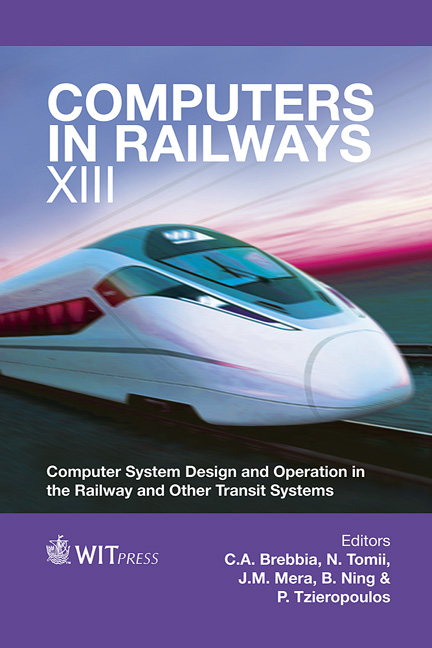Financing Railway Infrastructure: How To Invest And What Maintenance Policy?
Price
Free (open access)
Transaction
Volume
127
Pages
9
Page Range
663 - 671
Published
2012
Size
3,339 kb
Paper DOI
10.2495/CR120561
Copyright
WIT Press
Author(s)
M. Vidaud, O. Bernard, S. Crouïgneau, Y. Putallaz, J. Lévêque & R. Jacquier
Abstract
Financing railway infrastructure: M. Vidaud1, O. Bernard1, S. Crouïgneau1, Y. Putallaz2, J. Lévêque3 & R. Jacquier4 1OXAND, France ²IMDM, Switzerland 3RFF, Laboratoire d’Economie des Transports, France 4RFF, France Abstract This article presents three different ways of predicting investment needs to maintain and renew railway infrastructure. The ‘Level 1’ approach is based on financial ratios and does not take into account the infrastructure’s history or maintenance strategies. This simplified approach can be used provided that the components age pyramid is uniform. The ‘Level 2’ approach considers the age pyramid’s general impact without integrating budget constraints and possible specific optimization at the component level. This approach is useful and gives interesting rough estimates for macroscopic finance audits; it does not require an exhaustive knowledge of the owner’s material assets. The advanced ‘Level 3’ approach enables planning of detailed investment needs on short, medium and long-term scales. It considers both physical and economic lifetimes for each component of the infrastructure as well as taking into account the budget constraints of the infrastructure’s manager. It also allows the possibility of quantifying risks related to performance failure due to underinvestment. Using these different approaches, or cost models, with different European infrastructure managers enabled demonstration that investment needs and thus potential regulated returns (for regulated railway network management), strongly depend on infrastructure history and components age pyramid as well as physical and economic lifetimes. The article shows that management policy decisions and balance between renewal and maintenance, crucial in securing long-term network integrity (or ‘substance’) and in deciding on short-term investments, can
Keywords
railways, asset management, investment needs of infrastructure, CAPEX, OPEX, age pyramid





